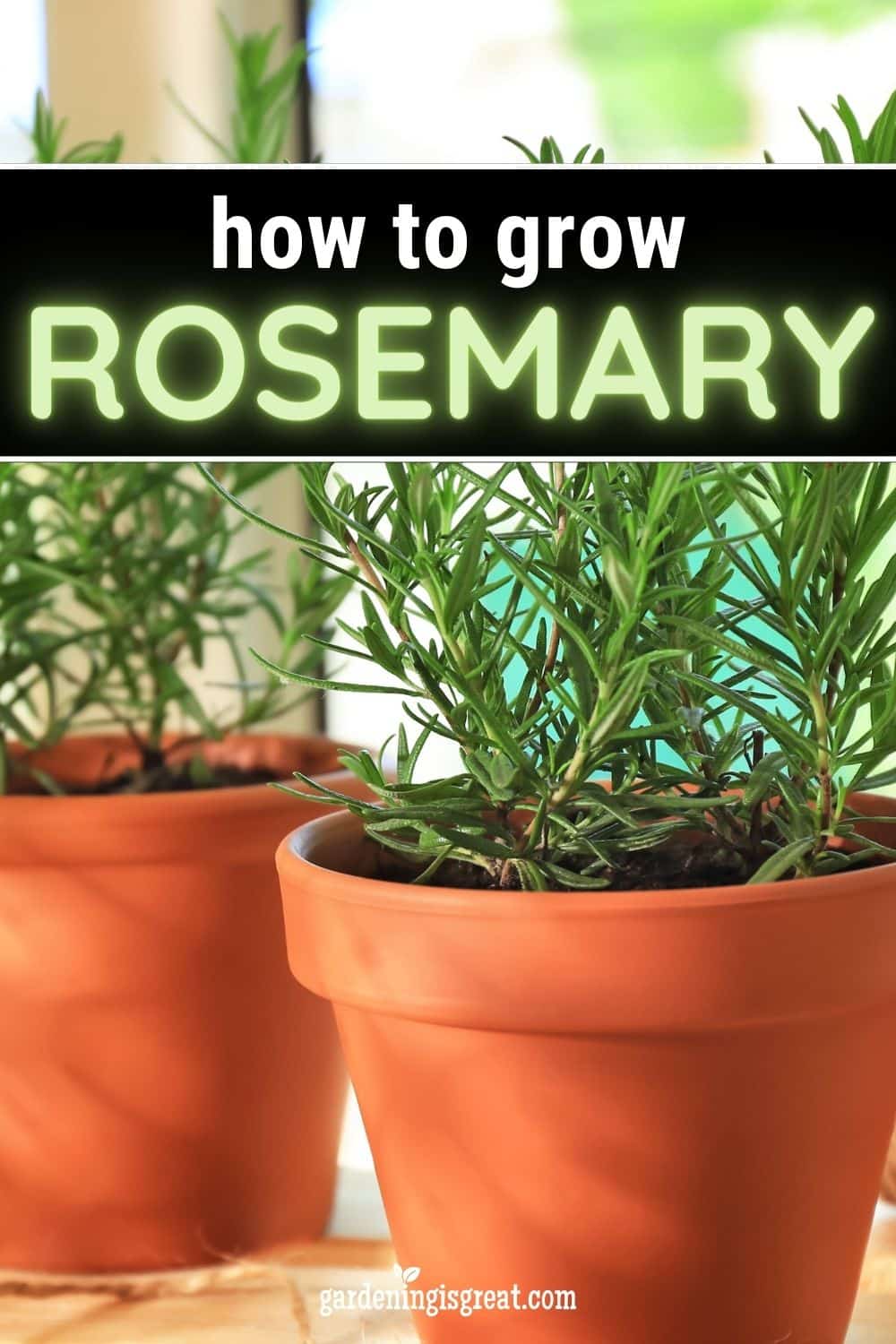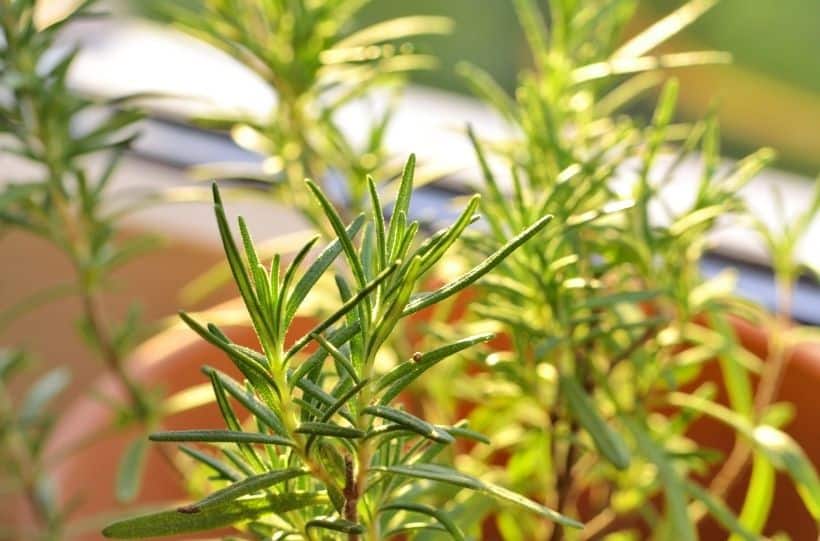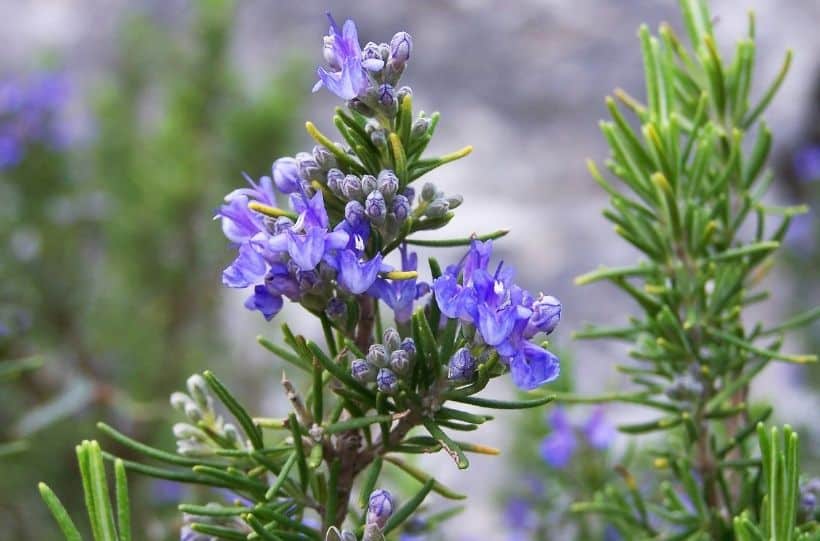How to Grow and Harvest Rosemary
Anyone can grow rosemary, a rather hardy perennial that can handle long cold winters and take off running come spring. Rosemary is best propagated through cuttings and thrives in warm sunny locations that do not get too hot during the typical growing season.
Rosemary can grow well in your kitchen herb garden or pots right in your kitchen with a grow light allowing you to enjoy the amazing benefits of having fresh rosemary on hand at any time.
For those that love savory dishes and Italian cuisine, rosemary makes a great addition to the garden.

This post contains affiliate links that earn me a commission at no additional cost to you.
How to grow rosemary
Rosemary thrives in warm sunny spaces with well-draining soil. When planting rosemary you want to keep in mind that this is a perennial shrub that needs to be in its place year after year.
It can be a great addition to perennial garden beds where they will go undisturbed from planting in the following years. Other great options include growing rosemary in large decorative pots.
Whichever you choose for where to grow your rosemary you want to be sure that you are providing enough space to allow plenty of airflow around your growing plants.
Before planting rosemary like most other plants you should add 2 to 3 inches of fresh compost to the soil tilling it in well to give your plants the best keep in mind this is the last time you will be building up the soil from the inside out for a couple of years.
Adding in plenty of compost and even old wood chips, small twigs, and leaves to help keep the soil packed with organic matter longer is a great way to prepare the soil for a perennial plant.
Rosemary should be kept with moist yet well-drained soil. Using mulch helps to trap in moisture so your plants can survive the summer heat. The deep watering method encouraging deeper roots is a great way to help your rosemary handle summer droughts better.
You can fertilize your rosemary with fresh compost each season and if needed use a liquid fertilizer like compost tea to help feed your rosemary as the season goes on.
Stop fertilizing 6 weeks before harvest for the best concentration of flavorful essential oils in the plant.

How to grow rosemary from cuttings
The best way to grow rosemary is from a propagated cutting, rather than from a seed. Propagating rosemary from cuttings is easy.
The fresher the cutting the better so asking around to see if friends or family has a rosemary plant they are willing to share a few cuttings of is ideal but many grocery stores sell cut fresh rosemary you can use to start your rosemary plants with.
Choose a cutting at least 2 inches long of fresh green growth avoiding woody stems. Remove leaves from the bottom two-thirds of the cutting. Dip the end in rooting hormone and place in a shallow container of peat moss or another growing medium.
Spray gently with a spray bottle daily and cover with plastic between spraying to help trap heat and moisture to encourage rooting.

How to grow rosemary in a pot
Rosemary like thyme and many other common culinary herbs can be growing inside with the proper amount of light. This can be achieved by placing your plant in a western or south-facing window or using a grow light to encourage growth over the long cold winter.
Rosemary grows best with plenty of space and drainage so using a pot several inches bigger than your plant’s root ball is ideal for starting rosemary.
To prevent your rosemary from becoming root-bound you should repot your plant once a year filling in the remaining soil with quality compost for the best results.
If growing outdoors in pots over the summer you should consider using a layer of mulch and a watering globe to make it easier to maintain the ideal watering conditions of your rosemary plants.

How to harvest and preserve rosemary
Stop fertilizing your rosemary plant to encourage slowed growth of your plants in the last 6 weeks or so before you harvest for the best concentration of flavorful oils making for a better-preserved herb.
You can harvest as needed for your favorite meals after your plant has become well established. Use the 1/3 rule when harvesting your rosemary during the growing season to leave enough for your plant to meet its needs.
At the end of the season, you can harvest the nonwoody parts of your rosemary plant before adding more mulch and allowing the plant to go dormant after the cold and frost roll in.
Always use clean garden shears when harvesting to prevent introducing bacteria into your tender plants. Excess rosemary can be used for drying, making herb-infused oils, and making a soothing memory and concentration-boosting tea.

And for more herb growing know-how, be sure to read these articles next:

